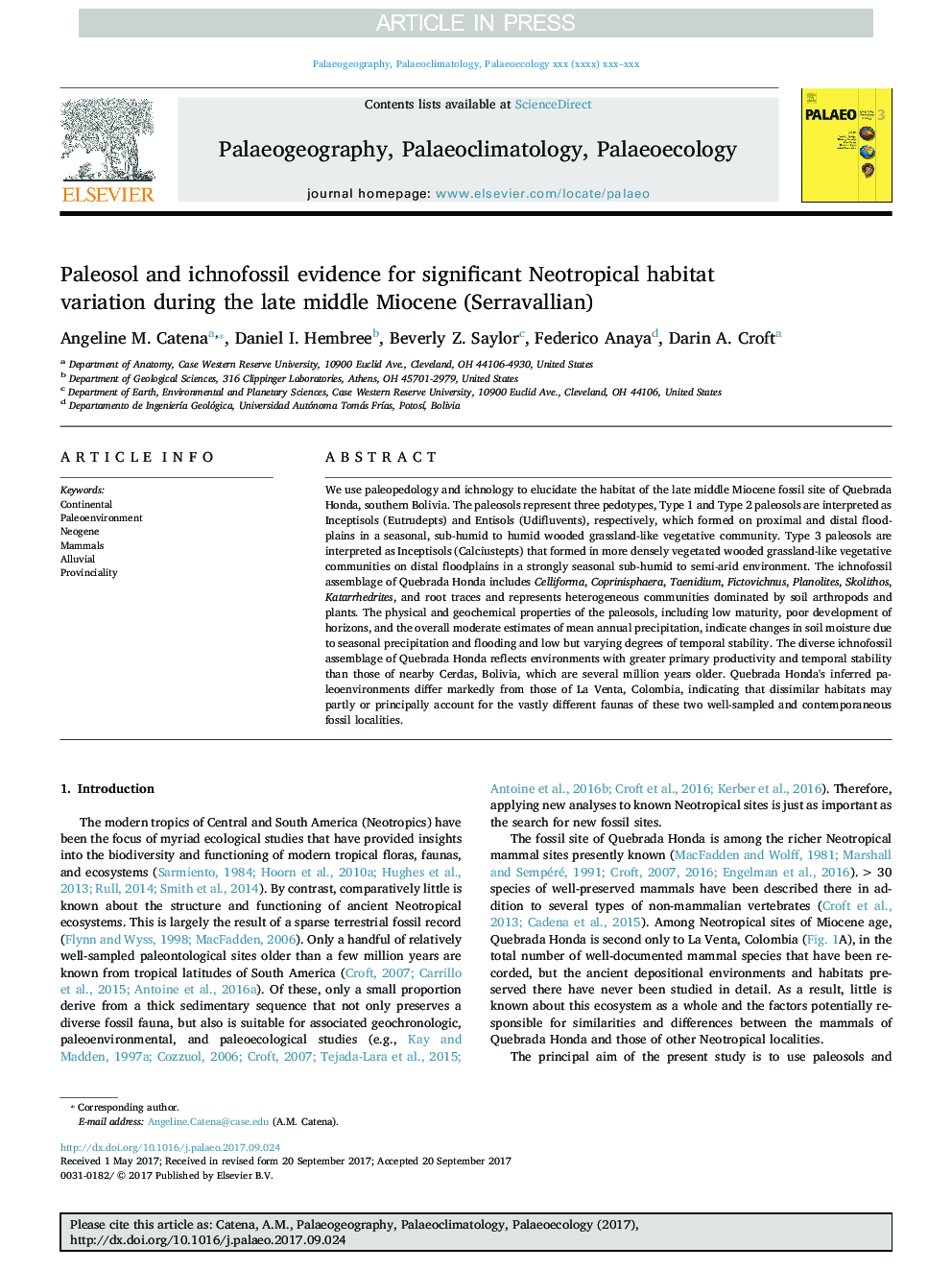| Article ID | Journal | Published Year | Pages | File Type |
|---|---|---|---|---|
| 8868595 | Palaeogeography, Palaeoclimatology, Palaeoecology | 2017 | 18 Pages |
Abstract
We use paleopedology and ichnology to elucidate the habitat of the late middle Miocene fossil site of Quebrada Honda, southern Bolivia. The paleosols represent three pedotypes, Type 1 and Type 2 paleosols are interpreted as Inceptisols (Eutrudepts) and Entisols (Udifluvents), respectively, which formed on proximal and distal floodplains in a seasonal, sub-humid to humid wooded grassland-like vegetative community. Type 3 paleosols are interpreted as Inceptisols (Calciustepts) that formed in more densely vegetated wooded grassland-like vegetative communities on distal floodplains in a strongly seasonal sub-humid to semi-arid environment. The ichnofossil assemblage of Quebrada Honda includes Celliforma, Coprinisphaera, Taenidium, Fictovichnus, Planolites, Skolithos, Katarrhedrites, and root traces and represents heterogeneous communities dominated by soil arthropods and plants. The physical and geochemical properties of the paleosols, including low maturity, poor development of horizons, and the overall moderate estimates of mean annual precipitation, indicate changes in soil moisture due to seasonal precipitation and flooding and low but varying degrees of temporal stability. The diverse ichnofossil assemblage of Quebrada Honda reflects environments with greater primary productivity and temporal stability than those of nearby Cerdas, Bolivia, which are several million years older. Quebrada Honda's inferred paleoenvironments differ markedly from those of La Venta, Colombia, indicating that dissimilar habitats may partly or principally account for the vastly different faunas of these two well-sampled and contemporaneous fossil localities.
Related Topics
Physical Sciences and Engineering
Earth and Planetary Sciences
Earth-Surface Processes
Authors
Angeline M. Catena, Daniel I. Hembree, Beverly Z. Saylor, Federico Anaya, Darin A. Croft,
